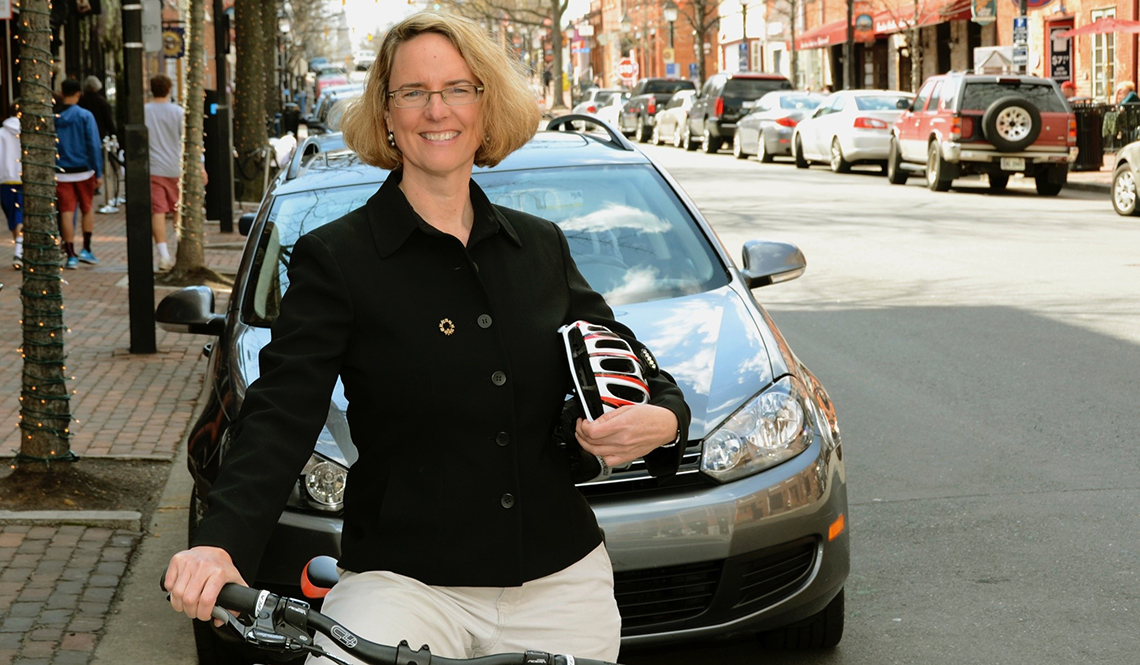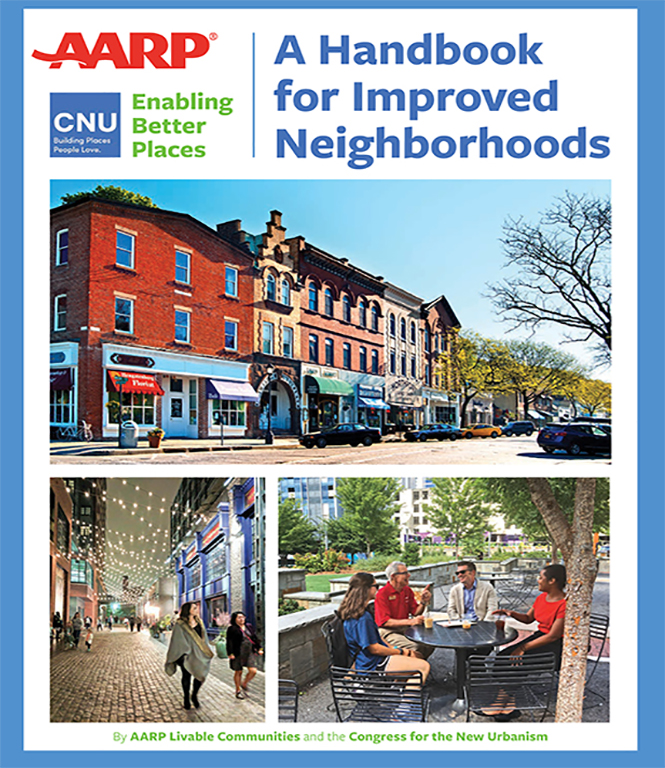Livable Lesson: Incremental Code Reform
Lynn Richards, the former president and CEO of the Congress for the New Urbanism, explains how simple changes in zoning, codes and land development regulations can lead to better neighborhoods
Why are so few cities, towns and neighborhoods in the United States walkable? Why is it so difficult to find vibrant communities where people of all ages, abilities, incomes and backgrounds can live, work, shop and play?
The answer, in many locations, is that zoning codes and land use ordinances have made the creation of such places illegal.
Enable Better Places
Small-scale land use and zoning changes can help communities revitalize and thrive. Learn how in Enabling Better Places: A Handbook for Improved Neighborhoods, a free publication for local leaders and community advocates.
Zoning codes and land use regulations in many areas mandate that communities are built with car-centric, suburb-style development patterns that prioritize automobile travel and separate residential areas from commercial areas. When public officials, developers, and neighborhood residents begin advocating for community spaces that are more walkable and provide varied housing options, they quickly learn that change can’t be achieved without first revising the local zoning codes and ordinances.
To help communities address the need for zoning and code reform, AARP Livable Communities and the Congress for the New Urbanism (CNU) produced Enabling Better Places: A Handbook for Improved Neighborhoods, a free publication about how to identify and implement the small-scale, incremental changes to local rules that can achieve desired goals without having to overhaul entire zoning codes and land use policies.
In this video series, Lynn Richards, the former president and CEO of the Congress for the New Urbanism, guides viewers through that document by explaining the history of the nation’s development patterns and how to make the types of small changes that will make a positive difference by identifying the right reforms, building public support, and using incremental code reform to benefit residents and the local economy.
Watch the subject-specific videos below — or scroll down to see all six segments compiled into one.
Videos
Lesson 1: Introduction to Incremental Code Reform
Learn about the process of incremental code reform and how small changes can have big benefits for communities.
Lesson 2: Understanding Places, Past and Present
Exclusionary zoning and home financing practices (aka: “red-lining”) were rooted in prejudice based on race, religion and income.
Lesson 3: Reinventing Places: Small Changes, Big Differences
CNU helps communities address problematic codes first rather than pursue a page-by-page, time-consuming review.
Lesson 4: Identifying the Right Reforms
Lynn Richards explains how selecting the right codes, locations and solutions can lead a community to the desired results.
Lesson 5: Building Community Support for Code Reform
Change is a technical and political process. Build support by advocating, engaging, educating and inspiring the community.
Lesson 6: The Benefits of Incremental Code Reform
Small-scale, location-specific code reform addresses the most problematic barriers first. The result: vibrant, more equitable places.
Incremental Code Reform with Lynn Richards: The Complete Collection
Watch all six videos with a single click.
Related Links
- Build Support for Code Reform
- Article: Lessons from Livability Leaders
- The Pop-Up Placemaking Tool Kit
- Placemaking
- Economic Development
- Equity
- Lynn Richards @lrichardsCNU
- The Congress for the New Urbanism @cnupublicsquare | @NewUrbanism
Learn More
The videos on this page were created by an external organization so might not reflect AARP’s public policies or advocacy positions, which can be found in the AARP Policy Book.
The videos were filmed in January 2021 | Page published June 2021
Stay Informed
The weekly, award-winning AARP Livable Communities e-Newsletter provides local leaders with information and inspiration for making their town, city or neighborhood more livable for older adults and people of all ages. Subscribe today!
AARP.org/Livable
Or visit the A-Z Archive at top





